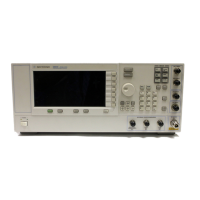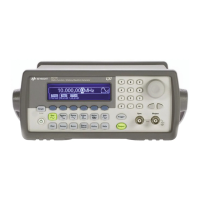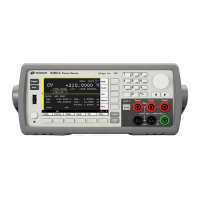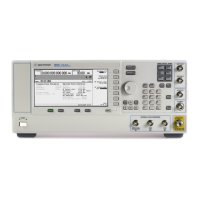Keysight CXG, EXG, and MXG X-Series Signal Generators Programming Guide 225
Creating and Downloading Waveform Files
Commands for Downloading and Extracting Waveform Data
Commands for Downloading and Extracting Waveform Data
You can download I/Q data, the associated file header, and marker file
information (collectively called waveform data) into volatile or non–volatile
memory. For information on waveform structure, see “Waveform Structure” on
page 214.
The signal generator provides the option of downloading waveform data either
for extraction or not for extraction. When you extract waveform data, the signal
generator may require it to be read out in encrypted form. The SCPI download
commands determine whether the waveform data is extractable.
You can download or extract waveform data created in any of the following
ways:
— with signal simulation software, such as MATLAB or Keysight Advanced
Design System (ADS)
— with advanced programming languages, such as C++, VB or VEE
— with Keysight Signal Studio software
— with the signal generator
Waveform Data Encryption
You can download encrypted waveform data extracted from one signal
generator into another signal generator with the same option or software
license for the modulation format. You can also extract encrypted waveform
data created with software such as MATLAB or ADS, providing the data was
downloaded to the signal generator using the proper command.
When you download an exported waveform using a Keysight Signal Studio
software product, you can use the FTP process and the securewave directory or
SCPI commands, to extract the encrypted file to the non–volatile memory on
the signal generator. Refer to “File Transfer Methods” on page 226.
Encrypted I/Q Files and the Securewave Directory
The signal generator uses the securewave directory to perform file encryption
(extraction) and decryption (downloads). The securewave directory is not an
actual storage directory, but rather a portal for the encryption and decryption
process. While the securewave directory contains file names, these are
actually pointers to the true files located in signal generator memory (volatile
or non–volatile). When you download an encrypted file, the securewave
directory decrypts the file and unpackages the contents into its file header, I/Q
data, and marker data. When you extract a file, the securewave directory
packages the file header, I/Q data, and marker data and encrypts the
waveform data file. When you extract the waveform file (I/Q data file), it
includes the other two files, so there is no need to extract each one
individually.
The signal generator uses the following securewave directory paths for file
extractions and encrypted file downloads:

